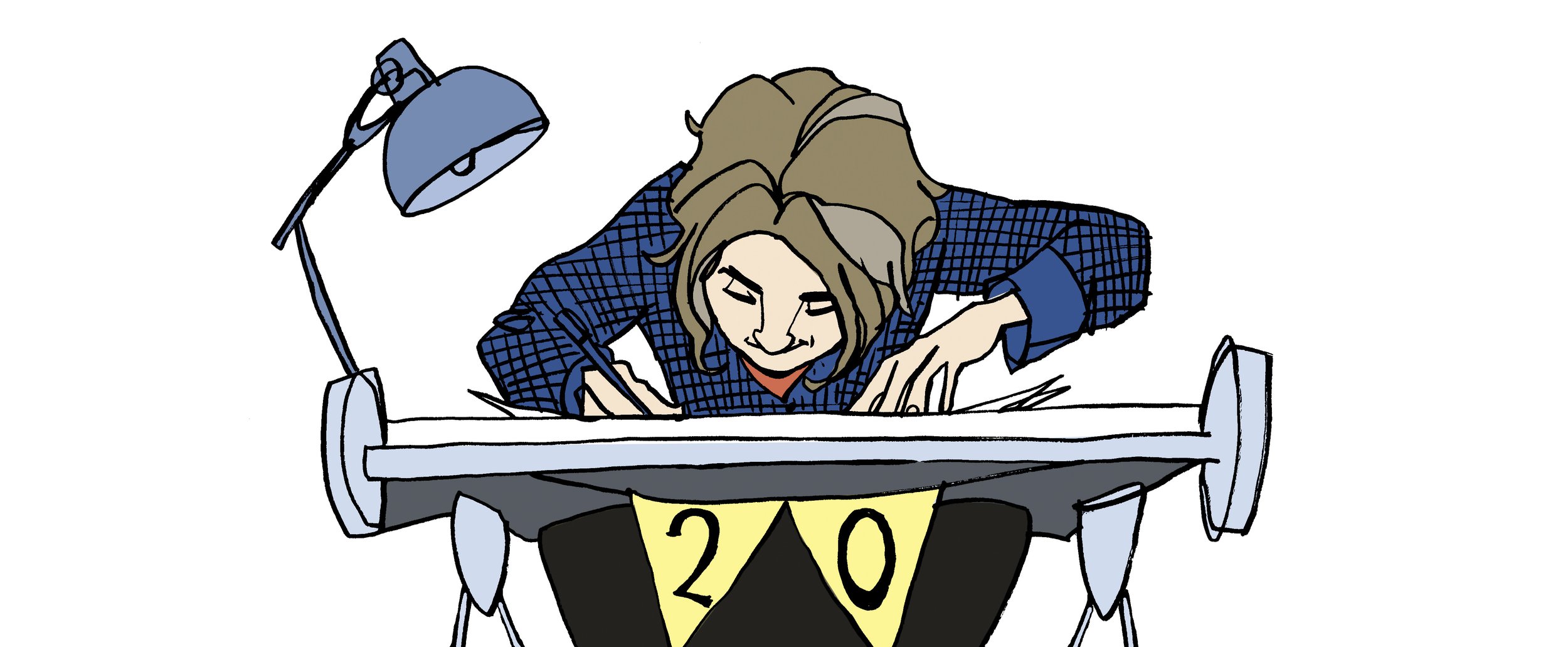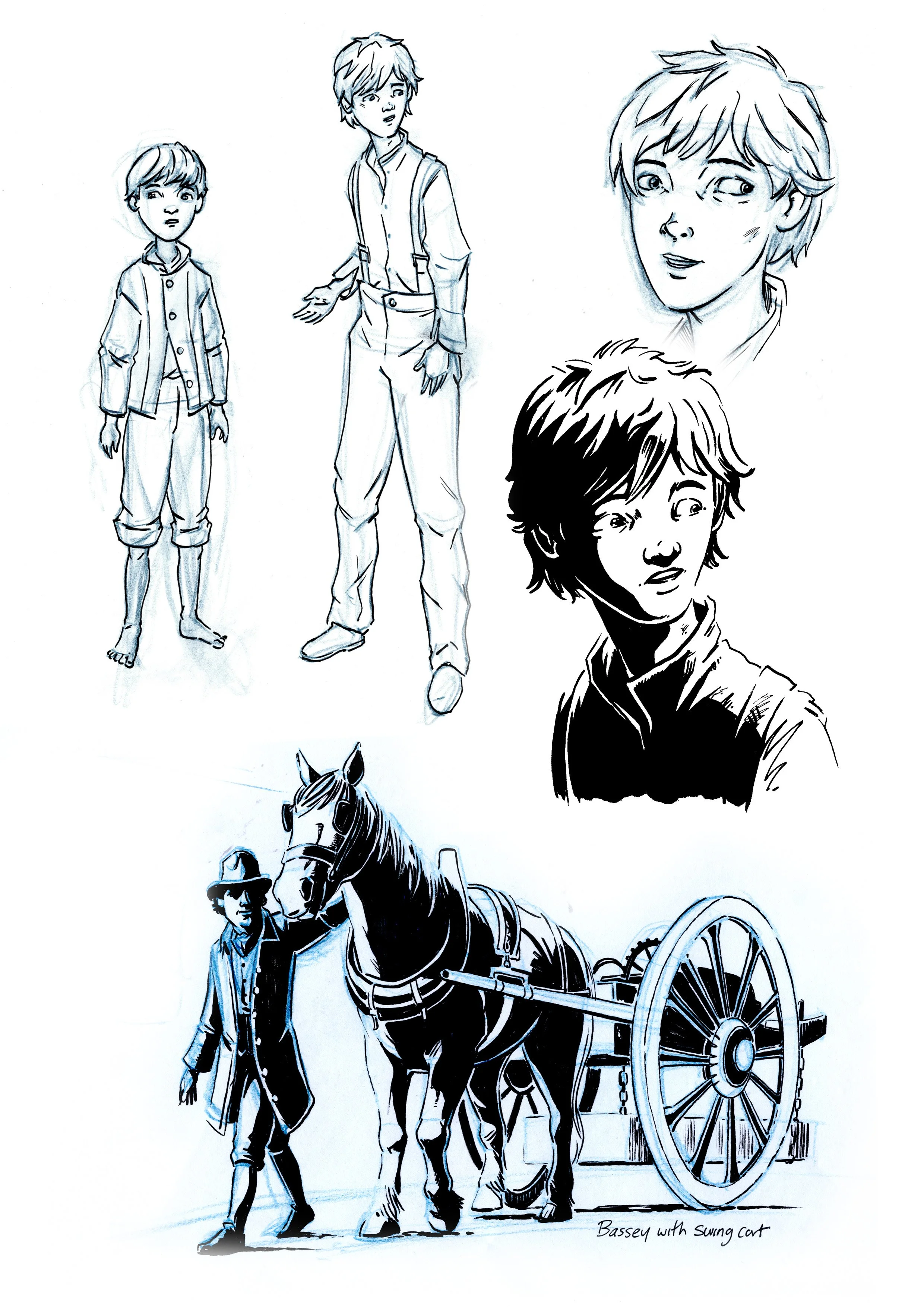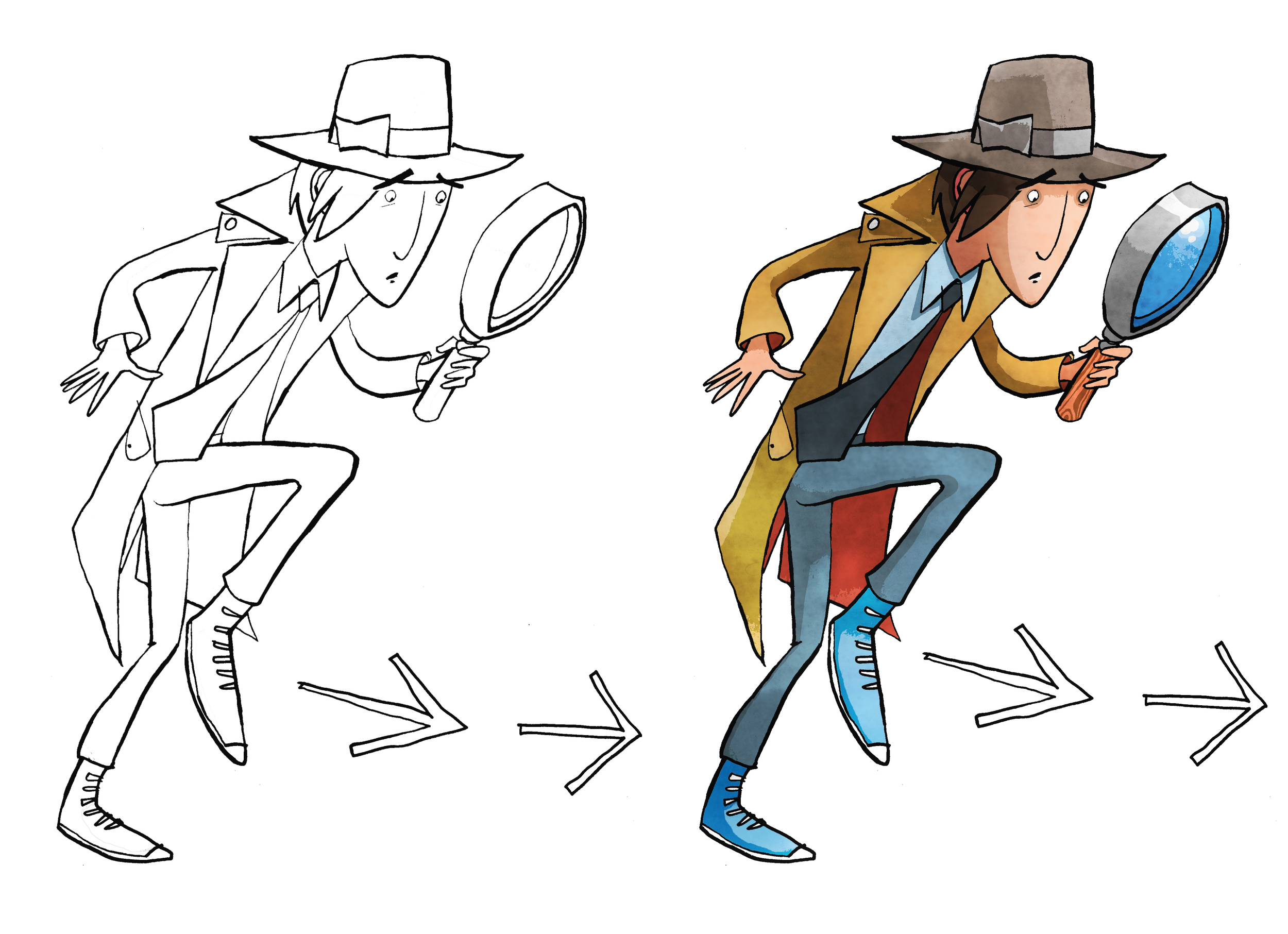When I get a story to illustrate, I read through the story and my mind takes me places, I imagine the environment and characters form the text and start to populate that world with characters.
If designing the world is a mixture of research, location, set building, dressing and prop making. Then creating the people that live there is like casting, only you draw not chose your actors.
These are character designs first laid down in pencil and then inked to cast the young boy first at about 8 years old then as a young teen for a story set early 1800’s
Once the casting is in place then its a matter of getting them to act, as in when I draw the story panels that feature the character reacting to the world around them.






